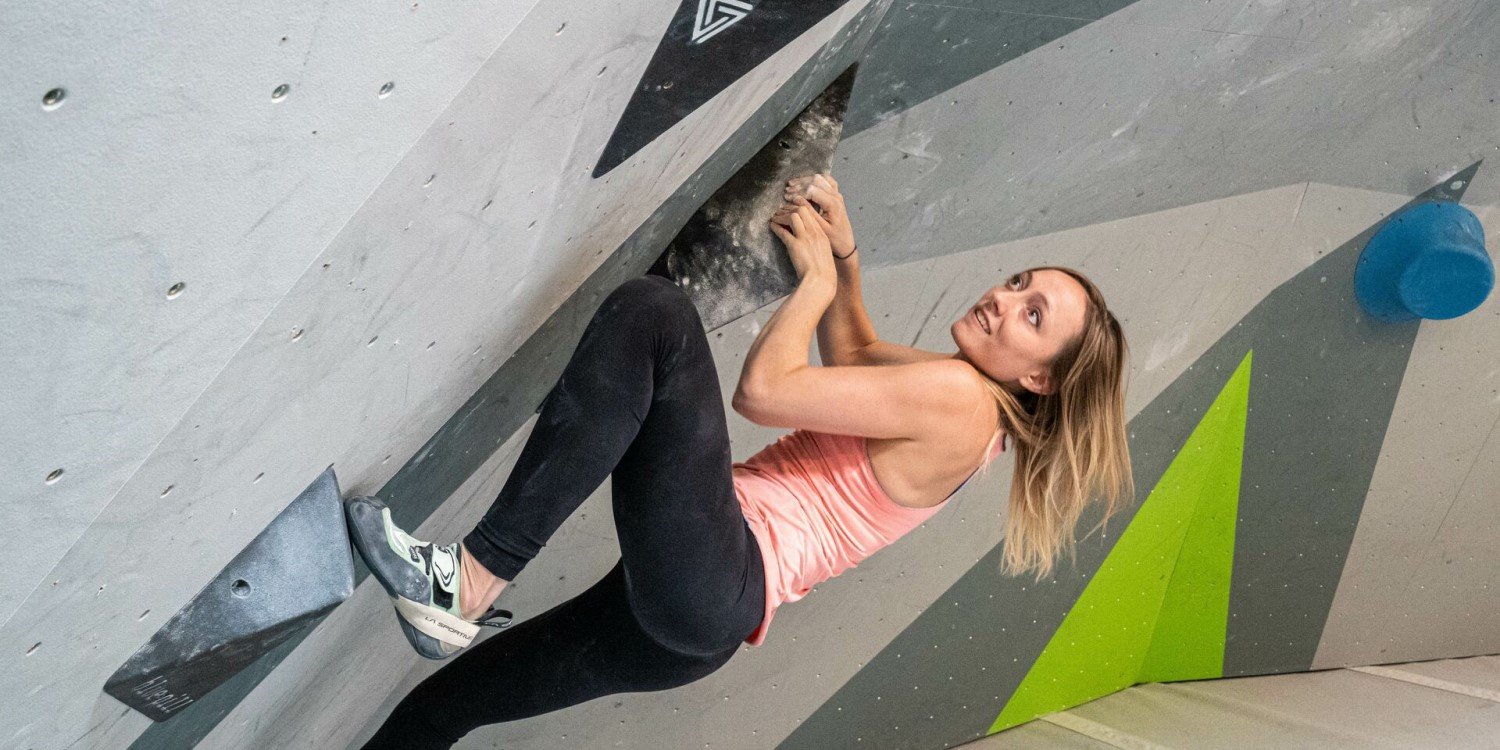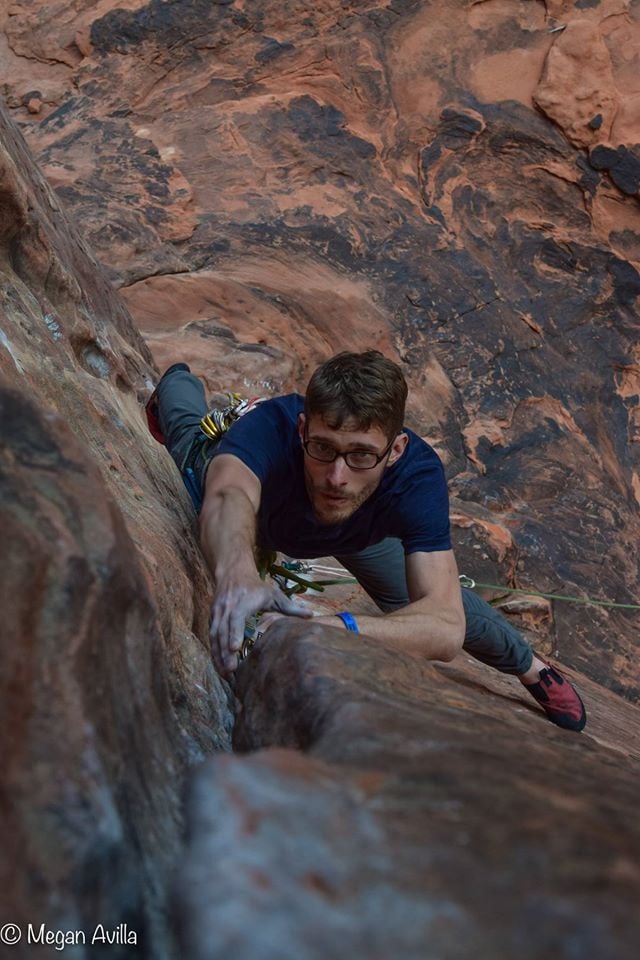3 Mental Training Tips to Practice for Peak Climbing Performance
The best climbers I know aren't just climbers on the wall. They are climbers as a lifestyle. I'm not talking about the dirtbag climber lifestyle, and I don't mean these people train all the time.
I mean that they practice the principles of effective climbing in their daily lives, and view their daily lives as practice for climbing.
These climbers go through daily cycles of trying, analyzing, and learning, and the result is a strong understanding and development of a sense of intuition. Additionally, by intertwining skill practice into regular life, they feel a sense of progress, success, and discovery on a daily basis. These positive feelings are motivating, which leads to more practice, and more sense of success, and so on.
I'm asked all the time, 'how can I build myself into a better, smarter climber?' One of the best ways to do this while avoiding injury is through the type of holistic skill practice I'm describing.
But what climbing skills can you really practice off the wall? The answer is, SO MANY! If you're looking to climb at your best, there are three (often overlooked) skills that are crucial for climbers looking to perform at their limit:
Be more intentional with your breath
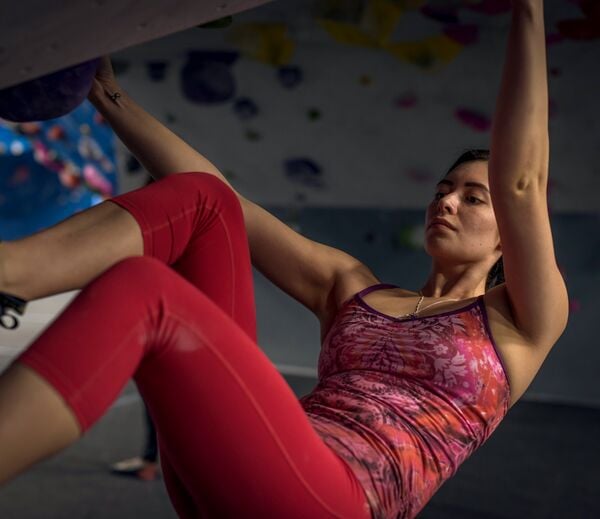
Breathing controls your mindset, manages your stress levels, amplifies your physical coordination, and can be a big factor in how successful you are on the wall.
Your breath is a tool that will help you tackle any climb. There are several different types of breath to gear you up for hard movement, dial back your stress, manage your mental dialogue, and switch between "thinking" and "acting."
While breath is a powerful toolbox, it's one that most of us don't effectively use. We may take some rest breaths when we find a good hold or release a power scream on a hard move, but for the most part we focus on other things and just let whatever happens with our breath happen.
However, all these other pieces of climbing that occupy our attention – movement, sequencing, emotions – are actually supported by our breath. Calm breath supports smart decisions and relaxed, fluid movement, while intense breaths support bursts of strenuous movement. When we stop using our breath intentionally it's like relinquishing control of the gas pedal in a car – we either apply way too much force and crash, or stall out and stop. Either way we don’t get where we want to go.
Effective athletes intentionally lead with their breath. A distance runner uses breath to maintain rhythm, and changes breath to create a new rhythm. A power lifter uses bracing breaths to stabilize their core for short, extremely high intensity movements. In all cases, the breath is intentional, and comes first – it is used as a tool to prepare for, initiate, and support an action.
The path to breathing intentionally is not complicated, but it does take work both on and off the wall. Here are five steps climbers should practice to become more intentional with their breath:
- Learn the tools: Understand the 4 kinds of breaths that exist and the purposes they serve.
- Belly breaths relax you
- Intense breaths rev you up for a hard section
- Power breaths help you execute movement at your physical limit
- Stable breaths help you maintain control in tenuous situations.
- Build self awareness: Start to notice your breathing habits, especially in stressful situations.
- Practice breath skills: Develop skill in actually wielding each type of breath.
- Apply breath skills: Refine your ability to plan ahead with breath, and practice "sequence" breathing just like you sequence movement.
- Mastery: Put it all together in practice on and off the wall, and "stress-proof" these skills so that you're able to breathe intentionally and well even in stressful situations.
For more tips on how to use breathing to fuel your climbing, check out our blog post here and here.
Pay attention to body language
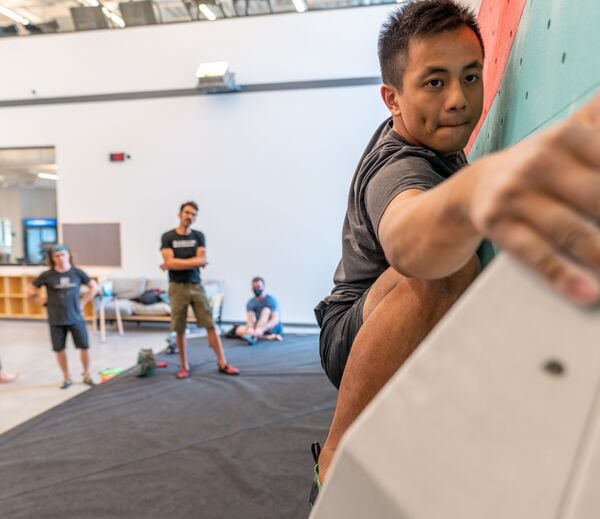
Just like with breathing, we can either let body language "happen", or we can intentionally use body language to affect our mindset and performance.
The first step to effectively using body language while climbing is to understand what you’re looking for. Here are some things to consider when thinking of body language in terms of climbing:
- Where your eyes are looking
- Shape of your shoulders
- Alignment of your major joints
- Facial expression
- How you reach for chalk, shake out, or perform other small actions
- Hesitation (or lack of hesitation) in your movement
- How "relaxed" or “stressed” you look
Now that you know what to look for for, start paying attention to your own body language on and off the wall.
Try this drill: Imagine yourself on a good day, where you feel confident, excited, and focused. How do you stand? How do you talk? What gestures do you use? What expressions are visible on your face?
Now, try to imagine the same when you’re having a day when you feel tired, distracted, uncertain, or even defeated. What is different? When you start to feel stressed, what muscles become tight? When you feel uncertain, where do your eyes tend to look? What other differences would an observer notice? Chances are most of these observations are similar whether you’re on or off the wall.
The goal with this drill is to build a clear, detailed mental picture of what your body language looks like when you feel focused, clear-headed, and confident, and to understand how this picture changes when you become tired, uncertain, or distracted.
When you have a clear image of your own body language, you can use this image to support your climbing. By modeling your “confident” body language on the ground before a climb, you can get into the right headspace to perform on the wall.
Noticing when your body language starts to become less confident in a climb will give you an early warning that physical or mental stress is building up before this stress overwhelms you. Try manipulating your body language on the wall in sync with your breath to increase or decrease your intensity level. By paying more attention to these small details in your body language (which also strongly reflect your mental dialogue) you have a much better chance of really understanding why you succeed or fail on a move or climb.
Learn to use self-talk
Self-talk refers to the words, images, and phrases that cycle through your head as you climb. Some of us have a constant stream of thoughts and words as we climb. Others have vague ideas or emotions, which lurk out of sight and sometimes culminate in specific words or phrases during moments of triumph, stress, or panic. A small portion of us just move, letting all but the smallest thoughts fall away. Realistically, most of us experience all these options at some point, and it can depend on the day. In the end, though, we all have some form of self-talk.
Just like with breathing and body language, we can either let our self-talk run freely or we can attempt to use it as a tool. For climbers, learning to use self-talk as a tool is tricky. Self-talk is an abstract concept. It’s hard to know where to start, and first attempts to use self-talk as a tool often feel forced and ineffective. How many times can you continue to tell your tired self “you can do it!”, if the result generally seems to still mean you fall off the wall?
Well, self-talk is usually more than just telling yourself “you can do it!” or “keep going!”. While these words aren’t bad, they are generic and usually aren’t enough to motivate you when you are very tired. This is because we have no emotional connection to them. Neither of these phrases remind us of something we really, deeply want or value.
Effective self-talk has two parts:
- Identifying an image that you connect with on a deep and personal level
- Identifying a word or very short phrase that can immediately cue that image in your head.
Your self-talk image might motivate you to keep going: the characteristic smile or voice of your training partner who you enjoy competing with. It might remind you of how it feels to execute a particular skill: the memory of a time you felt coordinated and utterly effortless on the wall. It might remind you to relax: the sensation of cool, flowing water washing over your body as you lay in a mountain stream.
Regardless of what the image is and how you use it, what matters is that it matters to you, and that you have a single word which will re-connect you to that image when you need it.
Building these word/image connections takes a lot of time, trial and error, and honesty with yourself. There is often a big difference between what images you think should or will motivate you and what images actually motivate you. The images that speak to you also inevitably change over time as you do.
The good news is that even a little work in this area can go a long way! If you’re able to identify just one new motivational image, and a word that helps you recall that image, then you will have a very powerful tool on the wall and a fun direction to explore!
Putting it all together
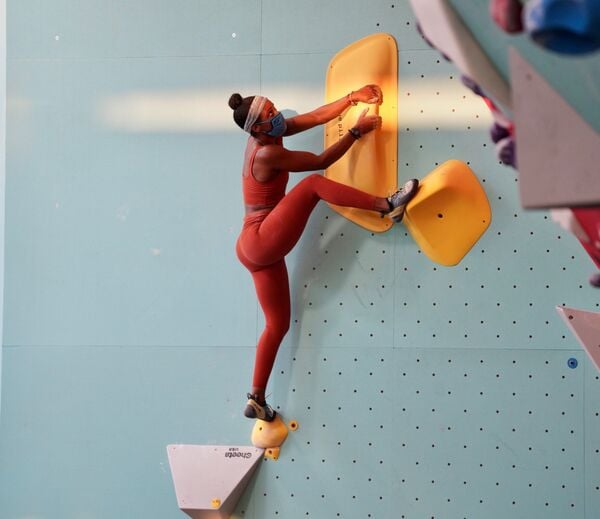
The three tools of breathing, body language, and self-talk are all related, and when applied in unison give you the powerful ability to control your intensity level.
Excellent climbers can look ahead (either from the ground or mid-route) to see what intensity level will be required, go from 5% to 100% intensity in just a couple moves when the climb calls for it, and then go back down to 5% in another move once that high intensity level is no longer needed.
These climbers accomplish this with – you guessed it! breathing, body language, and self-talk. The overall result for the climber is efficiency (bringing out what is needed when it is needed and nothing more) and peak performance.
Deliberate intensity is an absolutely essential ability for any climber who wants to approach their true physical potential. Mastering this ability is a lifelong journey, and if you put in the time to work on them, you will quickly see increases both in your performance and your understanding of climbing, and you may even have a lot of fun.
About Jesse
My name is Jesse, and I’m the Regional Assistant Director of Programs in the Bay Area, CA. I have been climbing since 2006, and working at Movement since 2014 as a coach, program manager, and private instructor. I have been lucky enough to work with many amazing coaches and athletes in and outside of Movement, ranging from brand new climbers and coaches to individuals coaching and competing at the national level. I’m still learning, and love being surrounded by coworkers who are passionate and excited to share their knowledge. Photo Credit: Megan Avila
